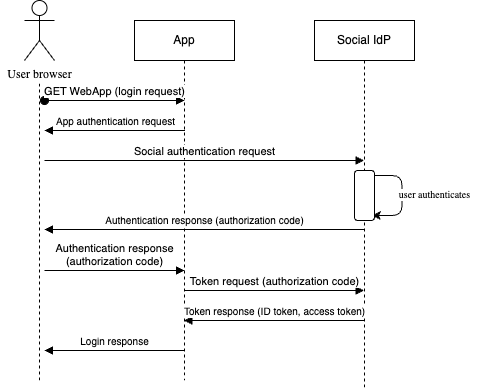Social login flow
Social login is powered by OAuth. OAuth is an open standard for authorization. OAuth provides client applications 'secure delegated access’ to server resources on behalf of a resource owner. It specifies a process for resource owners to authorize third-party access to their server resources without sharing their credentials. Specifically designed to work with Hypertext Transfer Protocol (HTTP), OAuth essentially allows authorization servers to issue access tokens for third-party clients , with the consent of the end-user. The client then uses the access token to access the protected resources hosted by the resource server. OAuth is commonly used to log into third-party websites using their Facebook, Apple, Google, or Microsoft accounts, without worrying about their access credentials being compromised, yet maximizing effortless login experience.

- The user wants to access the (web) application.
- The App offers social authentication option.
- Social authentication request is sent by clicking Login with [Social provider], the user is redirected to the social IdP platform.
- Social IdP authentication is being performed according to the particular social provider credentials & security settings.
- Upon successful authentication, the authorization endpoint generates an authorization code, and redirects the user to the return_uri. The code is added as a query parameter.
- The App is then requesting ID & access tokens from the social IdP (using the code received from the user) via the token endpoint.
- The token endpoint returns an Access Token and ID token.
- The user is granted access to the App (server resources) once the social provider has confirmed its identity.